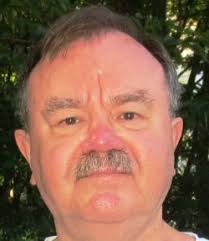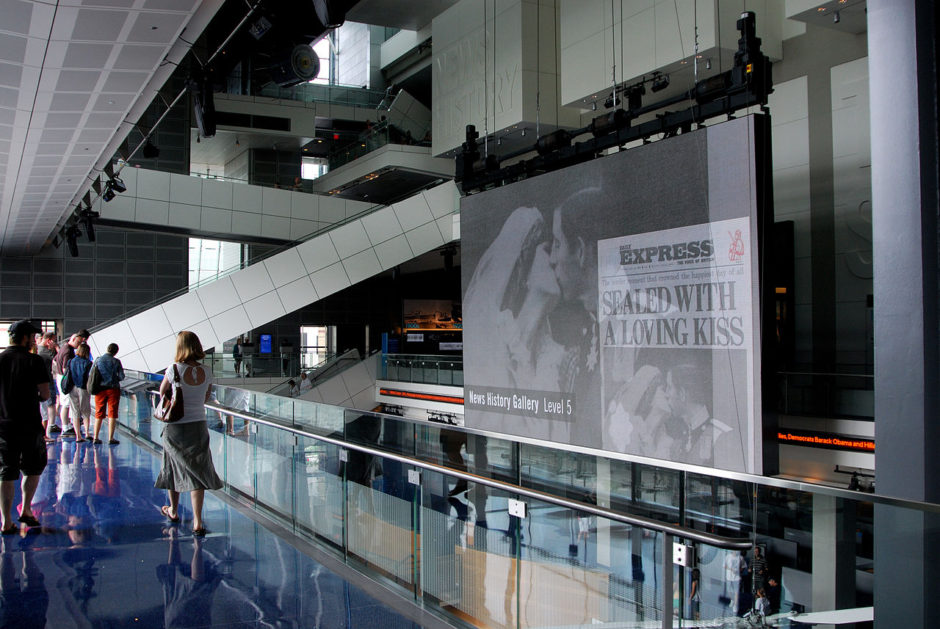When I was in Washington earlier this year, I visited the Newseum, a seven-level, 250,000-square-foot museum featuring 15 theaters and 15 galleries about the history of the media.
For anyone interested in newspapers and journalism, this is a wonderful place to visit.

One of the most dramatic exhibits is its Journalists Memorial, which pays tribute to reporters, photographers and broadcasters who have died reporting the news. The gallery features photographs of hundreds of the journalists whose names are etched on the memorial’s glass panels of the soaring, two-story structure, as well as kiosks where information on every journalist on the memorial can be accessed.
Each year, the Newseum selects a representative group of journalists who lost their lives on the job in the preceding year. Their names are added to the memorial to illustrate the dangers faced by journalists around the world.
On June 4, the names of 18 journalists were added to the memorial to represent all those who died in pursuit of the news in 2017, bringing the total to 2,323, dating back to 1837.
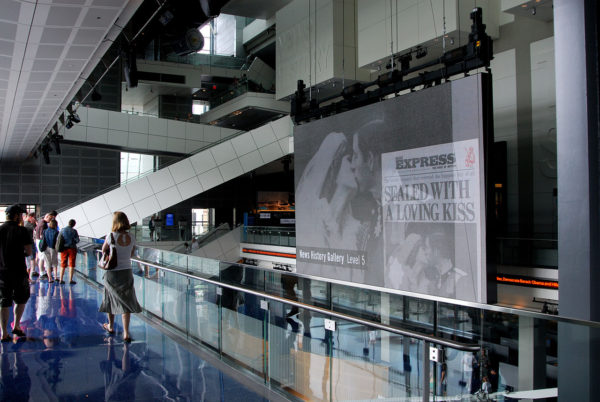
This year, eight of the 18 journalists were women. “Some of these women were killed covering news in war zones,” said Cathy Trost, executive director of the Freedom Forum Institute. “Others were brutally murdered for reporting stories that challenged the powerful. All the journalists recognized on this memorial this year faced unprecedented dangers as they worked to report the news, often in countries where press freedom is imperiled or nonexistent.”
Also on June 4, the Newseum blacked out its “Today’s Front Pages Exhibit,” which it located on the walls on the outside of the building. This is part of its annual “Without News Campaign.”
Each day, the Newseum receives more than 800 electronic files of newspaper front pages from around the world. Eighty of them are enlarged and printed for display in the Today’s Front Pages Gallery.
The “Without News Campaign” encourages the public to consider what the world would be like without journalists to report the news and raises awareness of threats to journalists around the world.
This month, a well-known journalist appears to have been murdered, and will no doubt appear on the memorial wall in 2019.
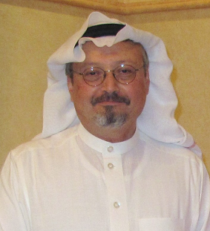
Jamal Khashoggi walked into the Saudi consulate in Istanbul, Turkey, on Oct. 2 to get paperwork to get married, but never came out. He has not been heard from since, with Turkish authorities announcing they think he has been killed.
“We believe that the murder was premeditated and the body was subsequently moved out of the consulate,” a Turkish official told the Reuters news agency.
Turkish investigators also are trying to determine the exact movements of 15 Saudi nationals who arrived in Istanbul the same day and are suspected of having a role in Khashoggi’s disappearance.
The Saudi consul in Istanbul, Mohammed al-Otaibi, rejected the accusation, asserting that “the citizen, Jamal Khashoggi, is not in the consulate or in Saudi Arabia.”
Khashoggi earned his reputation as a reformist by pushing the boundaries of critically questioning his country’s regional and domestic policies. A regular Washington Post contributor, the Saudi journalist was known for criticizing the kingdom’s crown prince, Mohammed bin Salman, in columns for the American newspaper.
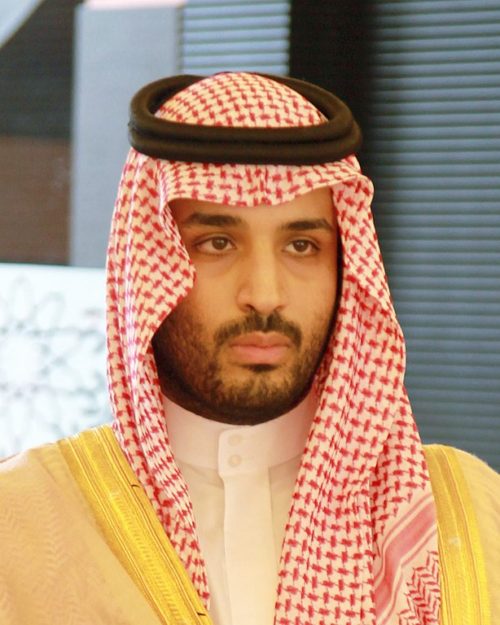
In “The Silencing of Jamal Khashoggi,” published October 3 by Karen Attiah, the paper’s Global Opinions editor, wrote that “we are extremely disturbed to have had no contact from Jamal since he was last seen visiting a Saudi consulate in Istanbul on Tuesday. At the time of this writing, we have not been able to reach him. We have inquired about Jamal’s whereabouts, and expressed our deep concern, to both Turkish and Saudi officials.”
The Post also put out a blank column in its October 5 edition after his disappearance. The empty column was titled “A Missing Voice” and carried Khashoggi’s byline.
Khashoggi has a had a career spanning three decades. Born in Medina in 1958, he studied journalism at Indiana University and began his career as a correspondent for the English language Saudi Gazettenewspaper. From 1987 until 1990, he reported for the London-based and Saudi-owned Asharq Al-Awsat daily. He also spent eight years writing for the pan-Arab Al-Hayat newspaper.
Khashoggi is best known for coverage of the events of Afghanistan, Algeria, Kuwait and the Middle East in the 1990s.
In recent years his position became more precarious. In December 2016, Saudi authorities banned Khashoggi from writing in newspapers, appearing on TV and attending conferences. This came after Khashoggi’s remarks made at a Washington think-tank the previous month, where he was critical of Donald Trump’s ascension to the U.S. presidency.
Khashoggi turned against the Saudi government after deciding that achieving democracy “from the inside” was not possible, according to Yahia Assiri, a former Saudi air force officer living in exile who met with Khashoggi in London late last year.
Khashoggi moved to Washington and became more vocal in his criticism of the crown prince, even comparing him to Russian President Vladimir Putin.
His fate remains a mystery a week after he was caught on closed-circuit cameras walking into the Saudi consulate. There’s a good chance he will join the other murdered reporters on the Newseum memorial wall next year.
Henry Srebrnik is a professor of political science at the University of Prince Edward Island.
